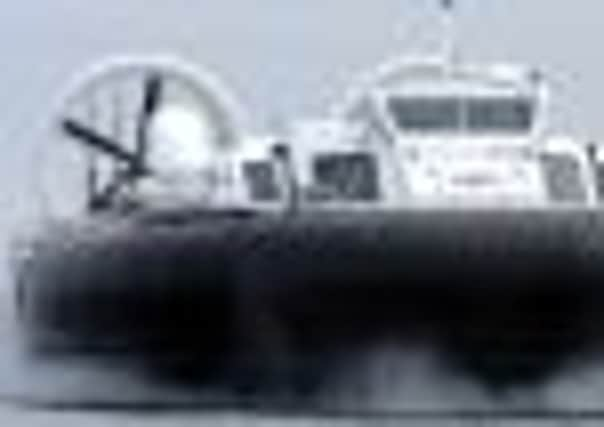Political inaction could sink latest Forth crossing plans


Our research at Edinburgh Napier University has always indicated there would be sufficient demand for a ferry service here. So the news that Andrew Banks and his company Pentland Ferries are looking at re-starting the ferry link between Granton and Burntisland should not come as a surprise. Mr Banks is Scotland’s most innovative ferry operator, having introduced several years back a large new catamaran on the notorious Pentland Firth route between Caithness and Orkney. Within the next two years his company, which does not receive any public subsidy, is expected to become market leader on the Pentland Firth, this despite his main competitor, the Scottish Government-owned NorthLink Ferries, receiving a big cheque from the taxpayer each year.
Mr. Banks proposes using two custom-built, low-carbon, 175-seat passenger catamarans for the Granton-Burntisland service. This will ensure departures every 30 minutes, a 15-minute crossing, and all-day operations. What this also means is that all types of users, whether commuters, shoppers or tourists, will find the service attractive.
Advertisement
Hide AdAdvertisement
Hide AdIn our research of urban ferry services we have found that typically half of all trips are made by commuters, with the other half by tourists. So we should not be surprised that a successful commuter service will also quickly become a major attraction for visitors too. Decision makers at both ends of the route should be investing in visitor attractions to take advantage of the new travel demand that will be created. Landowner Forth Ports can expect hundreds of thousands of additional visitors to be drawn to the waterfront. With a rapid, frequent, and reliable passenger ferry service on their doorstep, more people will also look to live, work and relax in these areas, which should in turn help strengthen the local property and business market. Indeed, without ferry passenger transport, a city waterfront or former dockland area can never be fully revitalised, and this is an important aspect our planners have tended to ignore.
Integration will inevitably be critical. The service needs to be linked by buses at both ends, with a park-and-ride option offered in Burntisland, plus provision of attractive, safe, user-friendly terminals/interchanges.
As Mr Banks knows, ferries are relatively straightforward to operate by well-trained crew members. However, it is in the ports and the related integration aspects where problems and challenges usually occur.
So what are we waiting for, you might ask? Yes, we have a willing investor well able to start a ferry service. But one of the key constraints in this instance is that while we have plenty of public policies and plans in Scotland for buses, roads, bridges, trams and rail, and seemingly endless funding to boot, there is nothing for ferries (outside the islands). Mr Banks is happy to invest several million pounds in the ferries required, and in some of the port facilities, as well as taking the long-term operating risk, but nobody in the public sector seems willing to help bring about the rest of the land-side infrastructure necessary. Fife Council stated it “will help to provide any non-financial assistance it can”. A similar lack of commitment seems evident at Edinburgh council, and at the Scottish Government.
Advertisement
Hide AdAdvertisement
Hide AdCompared with standard international approaches, this absence of public sector willingness appears to be a key policy weakness, and it probably constitutes the main factor holding back the start of a ferry service.
But that is not the only constraint. In most port cities around the world, waterfront land tends to be owned by the city or state, but here in Scotland it is now owned by a private company. That company, Forth Ports, will want to charge the ferry operator to use its ports. This is not the case in most other cities. Bus and rail travellers do not pay a fee for using road/rail infrastructure, and there is no road bridge toll now for cars, so why should a ferry operator or passenger have to pay an additional fee?
Where we are now is that we have an established entrepreneur who sees demand, and wishes to invest in a new public transport service. But key decision makers who should really be responsible for providing certain essential elements of port infrastructure are holding things up, and the port charging issue needs resolved.
Can the Scottish Government do anything about this? Well, it is using taxpayers’ money to build a new Forth bridge, which most people expect to cost in excess of £1 billion, added to the £500m for the Edinburgh tram, and it also spends billions of pounds on road and rail infrastructure, plus well over £100m annually on ferries and piers for island services. Surely, somewhere, the Scottish Government can find a couple of million pounds to help provide what are relatively modest ferry terminals at Granton and Burntisland so that this very important service can finally commence.
n Alf Baird is professor of Maritime Business at the Transport Research Institute, Edinburgh Napier University